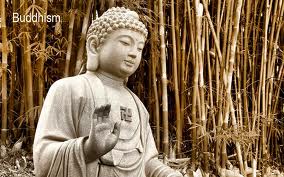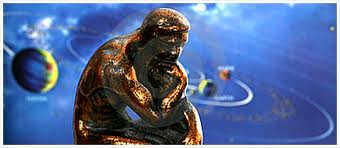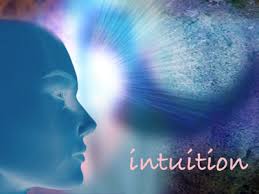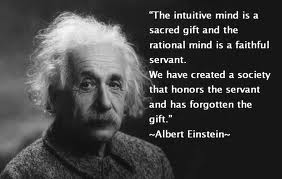Dr. V.K.Maheshwari, M.A. (Socio, Phil) B.Sc. M. Ed, Ph.D. Former Principal, K.L.D.A.V.(P.G) College, Roorkee, India
Mrs Sudha Rani Maheshwari, M.Sc (Zoology), B.Ed. Former Principal.A.K.P.I.College, Roorkee, India
“Thousands of candles can be lit from a single candle, and the life of the candle will not be shortened. Happiness never decreases by being shared.”
Buddha quotes (Hindu Prince Gautama Siddharta, the founder of Buddhism, 563-483 B.C.)
In the philosophical literature of the Hindus we find an elaborate account of the sense-organs in the treatment of the problems of perception. The different schools of philosophers had different views as to the nature, origin, and functions of the sense-organs. Their views were based mostly on their systems of philosophy, though they advanced certain facts of experience in support of their views. The Buddhist accounts of the sense-organs are widely different from those of Western physiology, because they arc based more on metaphysical speculation than on scientific observation and experiment.
It is essential to know the nature, origin, and functions of the sense-organs without comprehension of which there cannot be an adequate conception of some important problems of the Buddhist psychology of perception.
The Nature of the Sense-organs
The philosophy of Buddhism recognize six varieties of consciousness ; visual auditory, olfactory, gustatory, tactile, and purely mental. Corresponding to these there are six bases (asraya] : the organs of vision, audition, smelling, tasting, touch, and consciousness itself and there are six objects (visaya) : colours, sounds, smells, tastes, tangibles, and ideas. 1 The preceding moment of consciousness is the basic element of the next moment of consciousness. 2 Thus there are six sense-organs including consciousness. Consciousness is the faculty of intellect which apprehends non-sensuous objects. 3 It is called the mind. It is immaterial and invisible. 4
Leaving out the mind, there are five sense-organs. They are the end-organs (golaka). They are the eye, the ear, the nose, the tongue, and the skin. They are made up of a kind of translucent subtle matter. The five sense-organs are made up of five different kinds of atoms. 5 Thus the sense-organs are material but invisible. They are divided into two classes, viz. prapyakari and aprapyakari sense-organs. The former apprehend their objects when they come in direct contact with them. The latter apprehend their objects without coming in contact with them. The organs of smell, taste, and touch are prapyakari ; they must be in immediate contact with their objects. The organs of vision and audition are aprapyakari 5
they apprehend their objects at a distance. 6 The Buddhists do not hold with the Nyaya-Vaisesika that the sense-organs are different from the peripheral organs, and the visual organ and the auditory organ come in contact with their objects in order to apprehend them. 7
Buddhist believes that the visual organ is the eyeball or the pupil of the eye (golaka) and it can apprehend its object without coming in direct contact with it, because the eyeball can never go out of its socket to the object existing at a distance. According to the Nyaya-Vaisesika, on the other hand, all the sense-organs are prapyakari , they can apprehend their objects only when they come in direct contact with them. Thus the visual organ cannot apprehend its object without coming in direct contact with it. The Nyaya- Vais’esika holds that the visual organ is not the eyeball or the pupil of the eye ; it is the seat (golaka or adhisthana) of the visual organ which is of the nature of light (tejas) ; and this ray of light goes out of the pupil to the object at a distance and comes in direct contact with it.
The philosophy of Buddhism responds to the criticism of the Nyaya- Vais’esika doctrine of prapyakarita as follows :
(1) Firstly, the sense-organs are nothing but end-organs (golaka) which are within the range of perception. They are not mysterious entities behind these peripheral organs. So the visual organ is nothing but the pupil of the eye through which we see visible objects. And the pupil can never go out of the eye to the object, and come in direct contact with it.
(2) Secondly, the visual organ cannot come in direct contact with its object in order to apprehend it, for in that case it would not be able to apprehend an object bigger than itself. But, as a matter of fact, the visual organ can apprehend vast objects like mountains and the like.
(3) Thirdly, the visual organ apprehends the branches of a tree and the moon at the same time ; it takes the same length of time to apprehend these objects though they are at different distances. If the eye goes out to its object in order to apprehend it, then it must take less time to apprehend a near object, and more time to apprehend a distant object. But, in fact, the eye apprehends the branches of a tree and the moon at the same time 5 it does not take more time to apprehend the moon than to apprehend the branches ; just on opening our eyes we see both the objects at the same time.
(4) Fourthly, the eye cannot go out to its object ; for if it could go out to its object of apprehension, it would never be able to apprehend objects hidden behind glass, mica, etc., as it would be obstructed by them. 8
This way the Buddhist concludes that the visual organ can never go out to its object to apprehend it. It apprehends its object from a distance without getting at it.
The Perception of Time
According to Buddhist philosophy hold the three elements are not simultaneous; but they are discrete and detached from one another j there is no relation among them; there can be no relation between the knower and the known. They hold that at first there is a particularized presentation (sakara-jnana) of ” I ” (aham), then that of ” this ” (idam)) and then that of ” knowing ” (janami). Thus these discrete and momentary impressions flow in succession. But when the first impression of ” I ” vanishes, it leaves a residuum (vasana) which colours and modifies the second impression of ” this ” ; and when the second impression vanishes, it leaves a residuum which colours and modifies the third impression.
Thus though these three impressions are discrete and isolated from one another, there is a cumulative presentation of these momentary impressions owing to the transference of residua from the preceding impressions to the succeeding ones (vasana-samkrama] and the residua of the former colouring or modifying the latter (upaplava}. Thus the Buddhists have invented the hypotheses of residua (vasana}) transference of residua (vasanasamkrama), and modification of impressions by residua (upaplava} to explain away the fact of continuity or the consciousness of transition ; a succession of presentations is certainly not the consciousness of succession. The Buddhists do not explain, but explain away the fact of unity and continuity of consciousness. 9
The Buddhists examine the perceptive process and show that perception cannot apprehend the ” specious present “. A perception is nothing but a presentation ; and a presentation is the presentation of a single moment ; it cannot apprehend the past and the future. If there is a series of presentations, etc., is it the antecedent presentation b (uttaravljnana}, or is it the succeeding presentation b that takes hold of the preceding presentation by the hind part, as it were ? The Buddhists answer that b can neither take hold of c, nor can it take hold of a. The past as past is not present j and the future as future is not present. Hence the present presentation can neither apprehend the past nor the future presentation, and consequently, there can be no direct apprehension or perception of the past and future.10
Contrarily the Buddhists hold that the past enters into the present at the time of passing away, and the future also enters into the present, though it is not yet come, so that the present presentation is an echo of the immediate past and a foretaste of the immediate future. 11
Thus the Buddhists surreptitiously introduce an element of linking or transition between the past and the present, and between the present and the future to explain our consciousness of the continuity of time. But though they admit that the past and the future enter into the present, they insist that it is only the present that is perceived and not the past or the future which enters into the present. Such is the nature of our experience that it unfolds successively one presentation appearing and then disappearing. And in this series of presentations an antecedent state (purvadasa) cannot come in contact with a subsequent state (aparadala) and a subsequent state cannot come in contact with an antecedent state. All sense-presentations apprehend the present alone which is instantaneous or momentary, 12
The Naiyayikas hold that sometimes the present is perceived as extended or with a certain duration, for instance, when we perceive a continuous action, e.g. cooking, reading, etc. 13 The sensible present is not momentary, but has a certain length of duration (vartamanaksan dtrghah) ; it is not made up of a single moment, but composed of a number of moments (ndndksanaganatmaka).
The Buddhists urge that time cannot be a composite whole made up of parts ; it cannot be a cluster of simultaneous presentations because there is no simultaneity among presentations. Time is not bi-dimensional, as some Naiyayikas hold, but it is one dimensional. There is no simultaneity, but only succession among our presentations. It is foolish to hold that perception apprehends an extended present with a certain duration. 14
The Naiyayika and the Vedantist hold that a continuous and uniform impression bears clear testimony to the unbroken and uninterrupted existence of its object ; and consequently, it apprehends an extended present with a certain duration. The Buddhists object that there is no uniform impression (avicchinna-drstt). Every impression is momentary ; there cannot be a continuous impression. When there is a rapid succession of momentary impressions, they appear to be continuous, though they are not really so. And because there is no continuous impression, there can be no perception of the ” specious present ” with a certain duration. Even if there were a continuous impression, it would not be able to apprehend the ” specious present “ , because an object must be presented to consciousness in order that we may have a presentative knowledge of the object, and the object cannot be presented to consciousness for more than one moment, since all objects are momentary. But, as a matter of fact, there can be no continuous and uniform impression ; consciousness must always apprehend itself as momentary j and not only consciousness is momentary., but also the consciousness of the momentariness of consciousness is momentary. Here the Buddhists differ from the Nco-Hegelians, Green, and others, who suppose that the consciousness of the relation, of impressions must be enduring ; momentary impressions are apprehended as momentary by a consciousness which must be permanent. Thus, according to the Buddhists, all presentations are momentary, and as such they can apprehend only the present which has not a length of duration, but is constituted by a single moment ; the sensible present, therefore, is instantaneous or momentary. The Buddhists recognize only one aspect of time, viz. succession. They try to explain away the other aspect of time, viz. duration.
Super-Normal Perception
Dharmaklrti, the author of Nyayabindu believe that the intuitive perception of a yogin is produced by constant contemplation of the ultimate truths when it reaches the highest limit of perfection. Dharmottara clearly explains the nature of yogic intuition in Nyaya-Knduttka. There are four ultimate truths according to the Buddhists :
(i) all is momentary,
(ii) (ii) all is void,
(iii) (iii) all is pain, and
(iv) (iv) every- thing is like itself.
By constant contemplation of these four truths the yogin gradually attains a more and more distinct vision of them ; and when he attains the highest and most perfect stage of contemplation, he acquires the most distinct vision or intuition of the ultimate truths. Until the yogin reaches the highest limit of distinct vision born of constant contemplation, he perceives the objects of contemplation as slightly indistinct, as if hidden behind mica. But when he reaches the highest limit of distinct vision by constant contemplation of the ultimate truths, he perceives the objects of contemplation most distinctly, as if they were within his own grasp. And because he has the most distinct vision of the ultimate truths at the highest stage of contemplation., his intuitive perception is indeterminate.
According to the Buddhists, indeterminate perception alone is distinct and vivid ; and the so-called determinate perception is not in itself distinct and vivid, but it acquires distinctness and vividness from its contact with indeterminate perception which is its immediate antecedent. 15
Anuruddha, the author of jhhidhammatthasangaha describes the different levels of consciousness. He divides consciousness into two orders, viz. subliminal consciousness or subconsciousness below the threshold of consciousness (manodvara\ and supra-liminal consciousness or consciousness above the threshold of consciousness (manodvara]. He divides supra-liminal consciousness, again, into two orders, viz. normal consciousness and super-normal consciousness. Normal consciousness is called Kama-citta as it is generally confined to the Kama-loka or the plane of existence in which kama or desire prevails. Super-normal consciousness is called Mahaggatacitta or sublime or exalted consciousness. And this super-normal consciousness, again, is subdivided into Rupa-citta, which is generally found in the Rupa-loka or the sphere of visible forms which are not altogether immaterial, and Arupa-citta, which is concerned with Arupaloka or the sphere of the invisible or formless, and Lokuttaracitta or transcendental consciousness which is above the three worlds, viz. Kama-loka, Rupa-loka, and Arupa-loka. 16
In order to pass from the Kama-citta or normal consciousness to the Rupa-citta or the lowest order of super-normal consciousness a severe discipline and concentration of the mind are necessary. A monk (bhikkhu) must inhibit all physical and mental activity and concentrate his mind on a single selected object or sensation without changing the object of thought. After some time the sensuous mark or symbol is replaced by the corresponding image. This concentration of the mind on a bare sensation or its image is called ” preliminary concentration ” (parikamma-samadht). Then by more intense concentration of the mind the image is divested of its concrete, sensuous, or imaginal form, and is converted into an abstract conceptualized image, though not completely deindividualized. The concentration of the mind on this conceptualized image during the period of transition from normal consciousness to super-normal consciousness is still known as ” access concentration ” (upacara-samadhi). 17 At this stage there intervenes the lowest order of super-normal consciousness known as the first Rupa-jhana.
The Pali word jhana corresponds to the Sanskrit word dhyana which means ” concentrative meditation “, or ” ecstatic musing “. There are five Rupa-jhanas 5 which consist in the gradual elimination of the factors of consciousness and attainment of an ” intensified inward vision ” and on absolute equanimity or hedonic indifference.
The first jhanic consciousness of the Rupa-loka has five factors :
(i) Vitakka or initial attention by which sloth-and-torpor (thma-middha) is inhibited
(ii) Vicara or sustained attention by which doubt (vuikiccha) is inhibited ;
(iii) Plti or pleasurable interest or zest by which aversion (byapada) is inhibited ;
(iv) Sukha or pleasure or happiness by which distraction and worry (uddhacca kukkucca) are inhibited ;
(v) Ekaggata or one-pointedness of consciousness or individualization which develops into ecstatic concentration (appana-samadhi) and inhibits all sensuous desire (kdmachanda).
In the second Rupa-jhana, initial attention (vitakka) is eliminated and it occurs together with sustained attention pleasurable interest or zest , pleasure (sukha) and individualization (ekaggata).
In the third Rupa-jhana, both initial attention (vitakka) and sustained attention (uuara) are got rid of ; and it occurs together with pleasurable interest or zest (piti)^ pleasure (sukha) y and individualization (ekaggata),
In the fourth Rupa-jhana, pleasurable interest (piti) also is eliminated ; and it occurs together with pleasure (sukha) and individualization (ekaggata).
In the fifth Rupa-jhana^ pleasure or happiness (sukha) is eliminated and it occurs together with neutral feeling or hedonic indifference (upekkha) and individualization (ekaggata). Sometimes the fourth Jhana and the fifth Jhana are combined into one and only four Rupa-jhanas are spoken of. 18
The higher stages of samadhi in the yoga system are attained by concentrating the mind on subtler and subtler objects. But the higher stages of Jhana in the Buddhist system are attained by eliminating the factors of consciousness gradually. ” Here we have,” says Mrs. Rhys Davids, ” a gradual composure and collectedness of consciousness gradually brought about by the deliberate elimination of :
(i) the restless, discursive work of intellect, seeking likenesses and differences, establishing relations, forming conclusions ;
(ii) the expansive suffusion of zest, keen interest, creative joy
(iii) all hedonistic consciousness.
The residual content of consciousness is admitted to be
(a) a sort of sublimated or clarified satiy an intensified inward vision or intuition, such as a god or spirit might conceivably be capable of.
(b] indifference or equanimity, also god-like.” 19
Above the level of the Rupa-citta there is the Arupa-citta which is concerned with Arupa-loka or the world of the invisible or formless. The Arupa-loka is entirely non-spatial. And the experience of this world can never be sensuous. In the highest stage of the Rupa- citta, which is attained by the gradual elimination of the factors of consciousness, there is the abnormal clarity of inward vision or intuition together with hedonic indifference or equanimity. Above this stage there is no longer any elimination of factors of conscious-ness, but of all consciousness of distinctions or limitations.
Just as there are four stages of Rupa-jhana, so there are four stages of Arupa-jhana.
At the first stage of Arupa-jhana, the mind transcends the consciousness of matter and form, distinctions and limitations, and being concentrated on the concept of infinite space, acquires ” the blissful consciousness, subtle yet actual, of an infinite sensation of space “. 20 This may be compared to Kant’s pure intuition of space as distinguished from his empirical intuition of space.
At the second stage of Arupa-jhana, the mind transcends the sensation of infinite space, and being concentrated on the concept of infinite consciousness ” becomes conscious only of a concept, subtle yet actual, of consciousness as infinite “. 21
At the third stage of Arupa-jhana, the mind wholly transcends the conceptual sphere of consciousness as infinite, and being concentrated on the concept of nothingness ” becomes conscious only of a concept, subtle yet actual, of infinite nothingness “. 22
At the fourth stage of Arupa-jhana, the mind wholly transcends the sphere of nothingness and attains the stage of an all but complete hypnosis or quasi-unconsciousness which may be described as ” neither percipience nor non-percipience “. 23
When the mind transcends all these different stages of super- normal consciousness concerned with the Rupa-loka and the Arupa-loka, it attains the highest stage of super-normal consciousness which is called transcendental or supra-mundane consciousness (Lokuttara-citta). Jhana-consciousness is mystic consciousness. It is brought about by auto-suggestion. It consists in intensifying or concentrating consciousness on a single object. The object is first of all a percept, then an image, then a concept. So far the mind is in the preparatory stage. Then gradually the contents of consciousness are eliminated in the different stages of Rupa-jhana till the mind at last acquires super-normal clarity of vision and hedonic indifference. So long the mind is in the plane of visible forms (Rupa-loka). It is conscious of the ethereal but not of the immaterial or non-spatial. Then the mind comes in touch with the entirely immaterial world of the invisible or formless by gradually eliminating all consciousness of distinctions and limitations. The mind is, at first, concentrated on infinite space, then on infinite consciousness, then on infinite nothingness, and last of all attains the stage of complete trance or quasi-unconsciousness which may be described as neither consciousness nor unconsciousness. This is the highest stage of Jhanaconsciousness, but not the highest plane of consciousness. When the mind completely transcends even the plane of the invisible or formless (Arupa-loka), it attains the stage of transcendental or supra- mundane consciousness (Lokuttara-citta).
According to William James, ineffability, noetic quality, transiency, and passivity are the characteristics of mystical consciousness. As to transiency and ineffability, Mrs. Rhys Davids says, “the former is markedly true concerning the momentary ecstasy of attainment or appana as also concerning the realization of great spiritual elevation generally. Touching the Fruit ‘ of each ‘ Path ‘ of spiritual progress appears to have been a momentary (khanika) flash of insight. As to the latter, ineffability, it is also true that we find no attempts by brethren who were expert at Jhana to enter in detail into their abnormal experiences. . . . Language is everywhere too much the creature and product of our five-fold world of sense, with a varying coefficient of motor consciousness, to be of much use in describing consciousness that has apparently got beyond the range of sense and local movement. 20
As to the noetic quality, Jhana-consciousness is strongly characterized by it It gives us insight into depths of truth unfathomed by the discursive intellect ; it brings the mind into touch with higher and higher planes of existence. The chief intellectual result of the different stages of Jhana-consciousness is a super-normal clarity of inward vision or intuition ” untroubled by either discursive intellection or hedonistic affection “. The Jhana-process gives us the following powers :
(i) Hyperaesthesia of vision or clairvoyance (dibbacakkhu- alwnna) e.g. the super-normal vision of the past and the future history of a particular individual.
(ii) Hyperaesthesia of hearing or clairaudience (dibbasota) e.g. super-normal hearing of sounds and voices, both human and celestial, the distant becoming near.
(iii) Thought-reading and thought-transference or telepathy (cetopariya-nana or paradtta-vijanana).
(iv) Hypermnesia (pubbenivasanussati) or reminiscence of the past history of former lives. 21
According to William James, mystical consciousness has got another characteristic, viz. passivity. ” When mystical conscious- ness has once set in,” says James, ” the mystic feels as if his own will were in abeyance, and indeed sometimes as if he were grasped and held by a superior power.” 22 This characteristic of passivity, however, is lacking in Jhana-consciousness and differentiates it from other kinds of mystical consciousness. It differentiates it from the eucharistic consciousness or the mystic sense of union with the divine one, and also from the Vedantic sense of identity of the individual soul with the world-soul. ” There was, of course, this deep cleavage,” says Mrs. Rhys Davids, ” between it and the eucharistic consciousness, that the self was banished, and no sense of union with the divine One, , or any One, aimed at or felt. Herein, too, the Buddhist differs from the Vedantist, who sought to realize identity with Atman, that is, the identity of the world-soul and his own self or atman ” Tat tvam asi ” (That are thou).” 23
But why is Jhana-consciousness wanting in passivity ? Mrs. Rhys Davids offers a reason for it. She says, it has the essential noetic quality too strongly to permit of passivity as a constant. Intellect and volition, for Buddhist thought, are hardly distinguishable, and the jhayin seems to be always master of himself and self-possessed, even in ecstasy, even to the deliberate falling into and emerging from trance. There is a synergy about this Jhana, combined with an absence of any reference whatever to a merging or melting into something greater, that for many may reveal defect, but which is certainly a most interesting and significant difference.”
REFERANCES
1 Stcherbatsky, The Central Conception of Buddhism, p. 58.
2 Ibid., p. 58.
3 Ibidi> pp< 96
4 Keith, Buddhist Philosophy, p. 102.
5 The Central Conception of Buddhism, pp. 12-13.
6 The Central Conception of Buddhism, p. 60.
7 Vivaranaprameyasarngralia of Madhavacarya Vidyaranya p. 187;.
8 Kiranavall of Udayana (Benares, 1885 and 1887). , p. 74,
9 Vivaranaprameyasarngralia of Madhavacarya Vidyaranya , p. 75.
10 Nylyamanjari of Jayanta. (V.S.S., Benares, 1895)., p. 4.50.
11 VartamanSnupravdena bhutabhlvinoh kslayoli grahanarru Ibid., p. 450.
12 Nylyamanjari of Jayanta. (V.S.S., Benares, 1895)., p. 450. ^ ^ 13 ibid., p^ 45<x
13 Nylyamanjari of Jayanta., p. 451. “Psychologically considered, there is no such thing as a ‘ mathematical point of time ‘no time that is not enduring time.” Ladd : Psychology Descriptive and Explanatory, p. 311.
14 Nylyamanjari of Jayanta. (V.S.S., Benares, 1895)., p. 451- 452.
15 Nyayabindutlka of Dharmottara (Benares, 1924). , pp. 20-1.
16 Aung, Compendium of Philosophy, introduction, pp. 10 and 12.
17 Buddhist Psychology, p. 109.
18 Compendium of Philosophy , Introduction, p. 56.
19 Buddhist Psychology, p. 117-18 (1914).
20 Buddhist Psychology, pp. 115-16.
21 Compendium of Philosophy, Introduction, pp. 63-4.
22 The Varieties of Religious Experience, p. 381.
23 Buddhist Psychology, p. 114.












